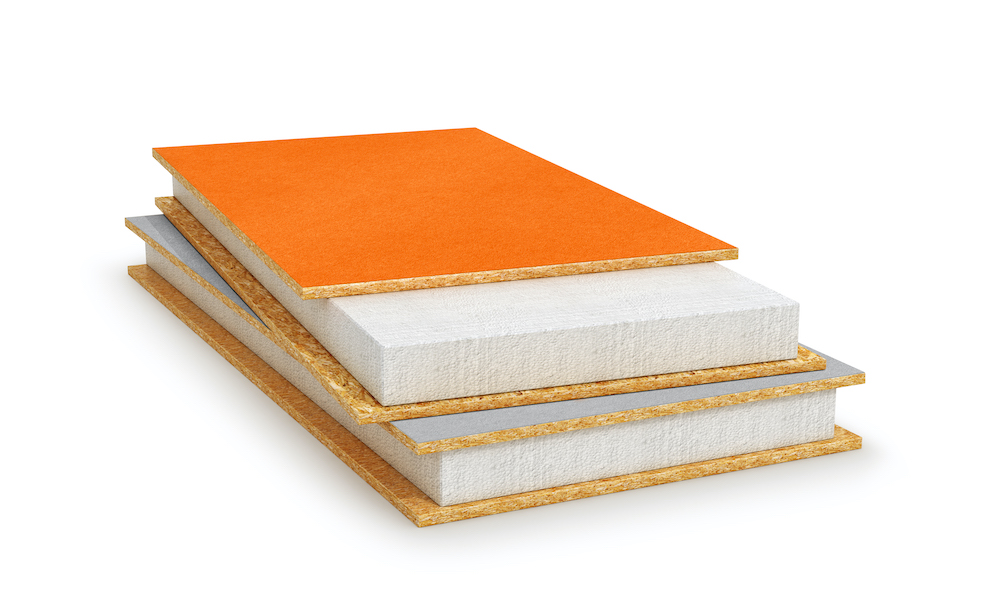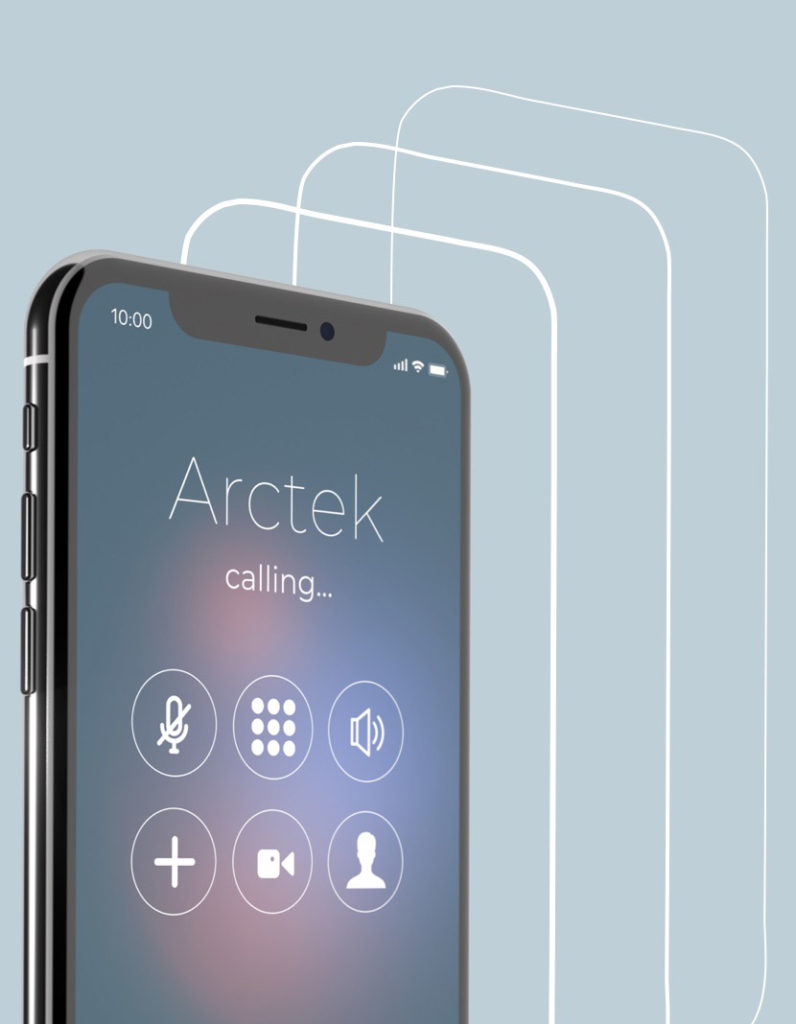What makes SIP suitable for application in modern, highly energy effiicent buildings?
SIPs are large building components, extending up to 7.5m in length. SIPs are also known as sandwich boards or composite boards. They are capable of achieving high U-values and are used to increase thermal performance across a variety of building types, including timber frame constructions. Arctek® Technology enhances the moisture resistance of SIPs and protects the OSB or plywood facer board and the insulation layer from potential damage caused by moisture ingress.
SIPs are prefabricated for easier and faster installation on site and can be externally cladded with facade installations, primarily brick. In roof construction, tiles, slate or metal sheathing can be applied to the outer face of the SIP panel.
SIPs are manufactured from an insulating foam core bonded with structural facings on both sides. The insulating material can be expanded polystyrene (EPS), extruded polystyrene (XPS) or rigid polyisocyanurate (PIR). OSBs are typically used as the structural facing but these can be replaced with plywood, steel or fibre-reinforced plastic amongst other materials.
The popularity of SIPs is rooted in their exceptional thermal performance with low air leakage levels, high load strength and the ease and speed of installation. In most cases, SIPs are pre-manufactured and delivered pre-cut to the required design and specification of a project.
Arctek® Technology is thermally bonded with the OSB or plywood board during manufacture. This means a very high level of prefabrication that helps speed up build programmes and is ideal for projects that use modern methods of construction.
For high performance SIPs, an airtight thermal envelope is created by taping or sealing panel edges to prevent air leakage.
OSBs are available in many different grades. It’s possible for higher grade OSBs to be used in areas where higher moisture content in the air, however even higher grade or treated OSB boards are not waterproof. Plywood is water resistant but similarly to OSBs, it is not considered waterproof. Persistent moisture exposure or heavy rainfall between the installation of the SIP and facades or roof covering can allow the water to penetrate through the timber’s strands, especially at the edges and seams of the boards and eventually cause rot or in some cases structural failure of the SIP.
For SIP applications, long lasting weatherproofing of the OSB board is crucial. SIPs that are not weatherproofed using Arctek® Technology will need to have a breathable membrane or weatherproof coating installed on site before any external cladding or finish is applied.



